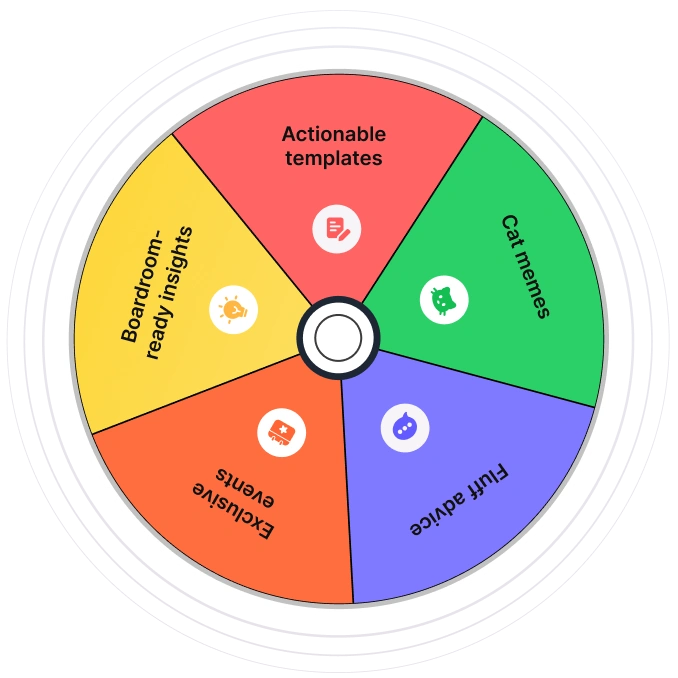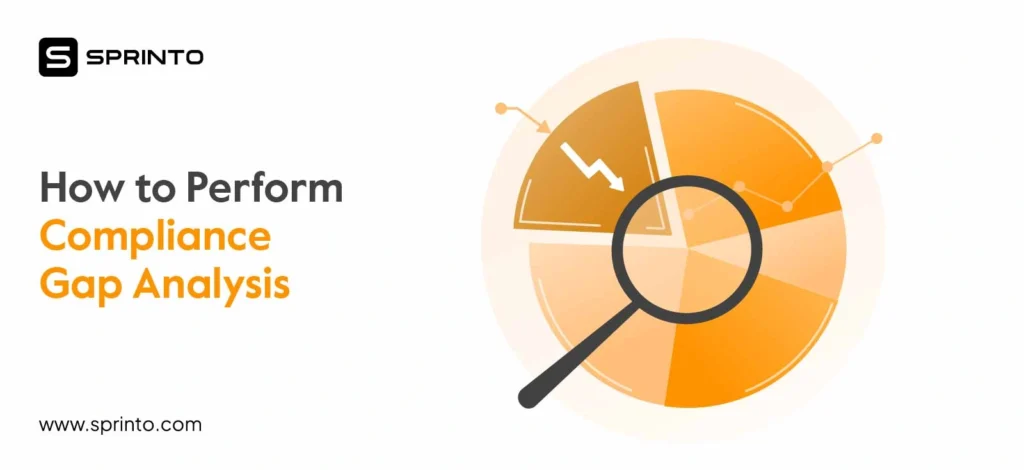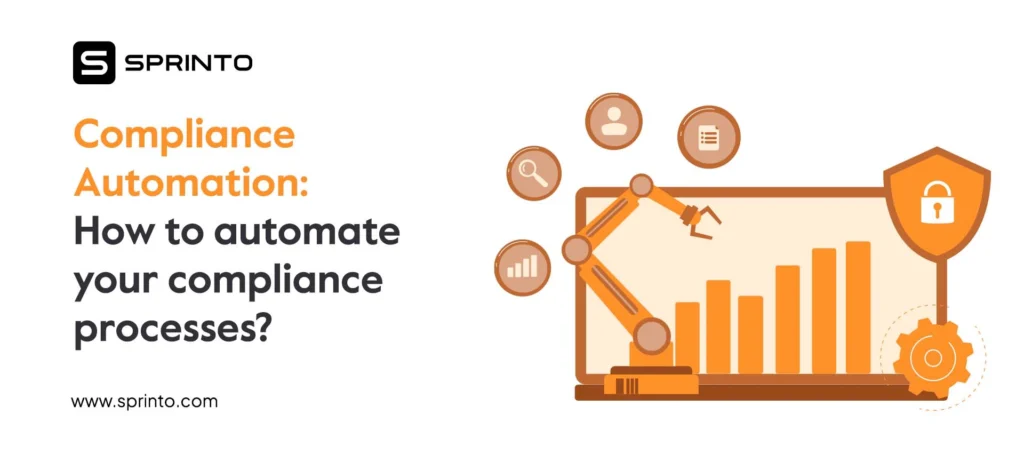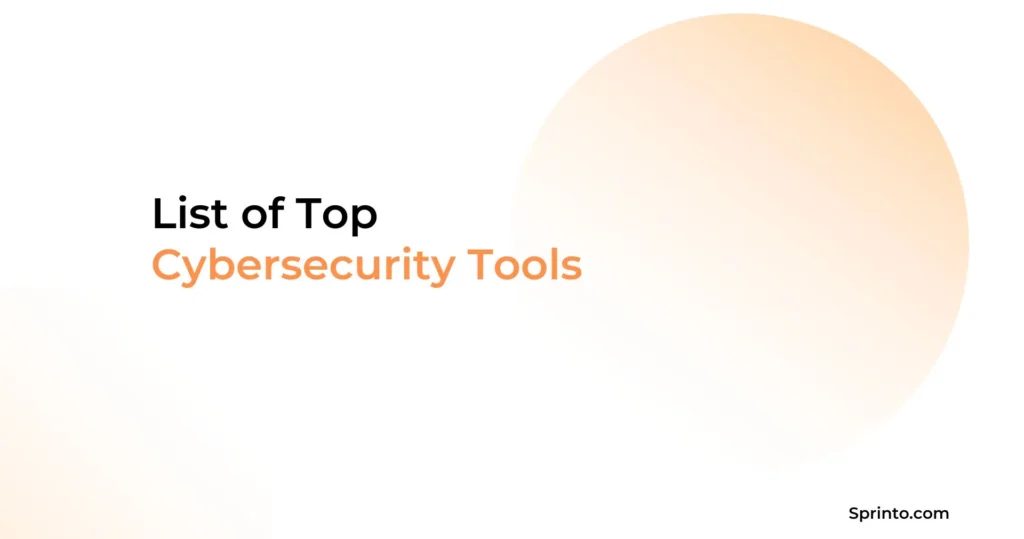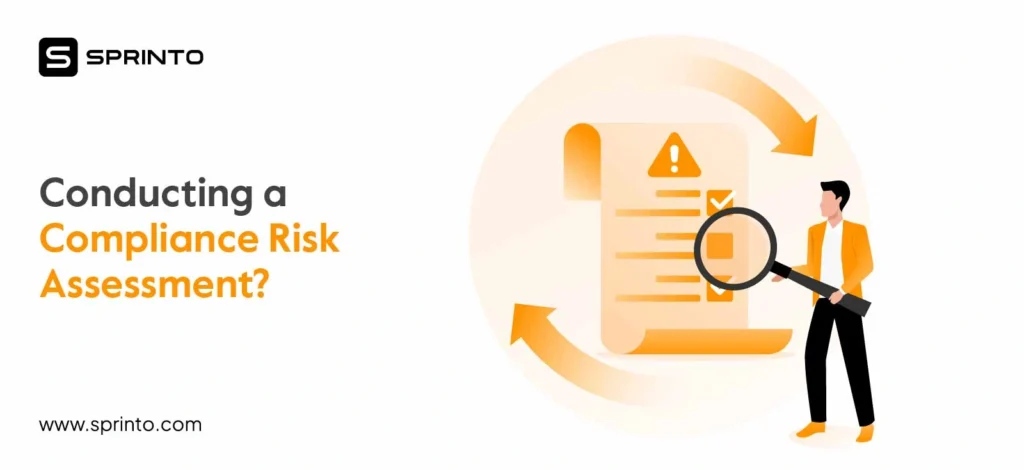No CTO in their right mind trusts their vendors and contractors completely. Irrespective of their relationship, vendors will need to fulfill a due diligence baseline to qualify as a good fit and a safe choice. But what separates your company from being a secure one from a vulnerable one is the depth of your due diligence.
The depth, of course, varies from company to company, but it exists all the same since companies often have to rely on vendors to stay compliant and have sufficient security practices in place. And any misalignment can have a cascading impact on the company’s compliance posture.
This is where third-party risk management or TRPM comes in.
So what exactly do you need to do to ensure your TPRM is in place with the market standards of 2025? Read on.
TPRM Definition: A structured approach to identify, assess, and monitor risks from external vendors, contractors, or partners.
Purpose: Prevent data breaches, compliance failures, financial loss, and reputational damage stemming from third-party relationships.
Core Risk Types:
• Data security
• Compliance and legal
• Financial
• Reputational
• Operational
Lifecycle Stages:
1. Pre-onboarding due diligence
2. Vendor engagement and assessment
3. Risk remediation
4. Ongoing monitoring
5. Breach tracking and reporting
Best Practices:
• Use risk-based tiering
• Classify data and restrict access
• Automate vendor assessments
• Monitor continuously
Compliance Requirements:
• ISO 27001 (Annex 15 – Supplier Controls)
• GDPR (Processor contracts, risk assessments)
• SOC 2 (Vendor control demonstration)
• HIPAA (BAAs and risk safeguards)
Why Sprinto? Sprinto automates TPRM workflows from vendor evaluation to continuous compliance across cloud environments.
What is third-party risk management?
Third-Party Risk Management (TPRM) is the method of identifying, assessing, and monitoring risks related to vendors, suppliers, and contractors employed by a company. It is a key aspect of cyber security programs because it forms the first line of defense against any risk a third-party business relationship introduces to the operation.
Third-party risk management (TPRM) refers to end-to-end activities to reduce the potential revenue loss, operational stability, or reputational damage that occurs when partnering with external service providers. These activities involve identifying vulnerabilities, determining the level of risk for each asset, implementing controls to minimize damages, and mitigating the impact caused by incidents.
“Third Party Risk Management (TPRM) is a relatively new and complex topic. The scale of the challenge is daunting so companies need to be proactive and strategic in their approach.”
– Patrick Ryan, Managing Director of Phinity Risk Solutions
Why Third-Party Risk Management Is Critical in a Vendor-Driven World
As your business grows and expands into new markets, your dependencies on external vendors become deeper entrenched. But this also introduces new and often unexpected risks.
When external vendors gain access to your internal systems, especially those containing sensitive data like PII, intellectual property, or financial information, they increase your exposure to various security threats. And if something goes wrong, the consequences don’t stop with the vendor. They fall squarely on your business.
Companies that handle sensitive data are typically bound by one or more regulatory frameworks, depending on the type of data and the regions they operate in. So, if a vendor’s mistake leads to a data breach, your business could be held liable. The impact of a single incident can be profound:
- Regulatory penalties or even loss of your business license, especially if government agencies oversee your compliance, and the damage is irreversible.
- Loss of intellectual property if research data or trade secrets are leaked. Once exposed, this data cannot be taken back.
- Disruption of critical operations. Depending on the breach, key functions might slow down or stop entirely.
- Reputational damage. Trust is hard to earn and even harder to regain. Losing it can affect relationships with existing and future clients.
Of course, assessing third-party risk is not a new concept. But nearly every security report points to the same trend: Incidents involving vendors are increasing, and traditional, one-off approaches to managing this risk are no longer effective.
Handling vendor risk without a proper plan is a long-term liability. That’s why third-party risk management needs a structured, comprehensive approach. It is the only way to stay resilient, secure, and compliant in today’s interconnected world.
What are the Types of Third-Party Risks?
In the domain of threats, “risks” is quite a broad term that could imply anything from security lapses to reputational damage.
Data security and privacy risks
When external entities access sensitive internal data, APIs, or IT systems, they can inadvertently expose it to unauthorized individuals, often with malicious intent. Common vulnerabilities include incorrectly configured systems, inadequate access controls, and weak encryption.
Compliance and legal risk
If you handle sensitive data, your business must comply with at least one compulsory regulation. Anyone accessing your data, whether employees, consultants, or partners, also falls within the scope of the legal requirements. If the vendor violates a legal clause, the repercussions and penalties are your responsibility.
Financial risk
No matter the type and seriousness of the risk, the impact is always felt along the financial lines. These risks often become evident only after the damage is done.
If your vendor’s controls and measures fail to identify and mitigate vulnerabilities, they may halt the operations for which they are responsible. Risks like underperformance, non-compliance, unknown vulnerabilities, and sudden upper management change can require you to scramble for last-minute workarounds or a new vendor. Ultimately, the bottom line takes a hit.
Reputational risk
Your business is the point of contact for your customers and potential clients. They are oblivious to your underlying functions and vendors. Practices like unethical activities, regulatory violations, corruption, or data misuse can cause performance lapses, negatively impacting customer outcomes. Even if you had no control over the events that led to the issues, your business will be held accountable for the following losses.
Operational risk
When you outsource certain operations to external bodies, your ability to control outcomes reduces while accountability remains unchanged. If your vendor faces outages like technical failures or security breaches, it can halt the operations associated with that vendor.
For example, if your cloud provider hosting customer-facing applications experiences downtime, it can jeopardize client trust. Instances like this are a common source of operational risk.
The Third Party Risk Management Lifecycle
Because TPRM can be vast and complex, we’ve divided its implementation into two stages. This section discusses how to implement an effective third-party risk management program before vendor onboarding and during ongoing third-party engagements.

Here are the 5 steps of implementing third-party risk management:
Stage 1: Before you onboard a third party
The pre-onboarding process of third-party risk management (TPRM) is important to ensure that the potential third parties you’re considering meet your organization’s standards. Before a formal engagement, you need to thoroughly evaluate their compliance and security.
This stage involves the following key steps:
Step 1: Conduct thorough due diligence
As a first step, you should conduct thorough due diligence of your potential vendors. Consider assessing their history with reviews from websites like Capterra, G2, Software Suggest, etc. Also evaluate the risks your organization is going to face once the third party is onboarded. The risks associated with it should be estimated based on the level of risk exposure you’re going to get exposed to.
Step 2: Engage the third-party
Once a vendor meets the external security requirements, the next critical step is to delve deeper into their internal security measures. This step ensures that the vendor’s overall security posture aligns with your organization’s standards and expectations.
Here are specific details that you should consider during this engagement:
- Completing a security questionnaire
- Checking security certifications
- Assessing data protection and privacy policies
- Ensuring employee security training
- Evaluating incident response plans
As a bonus, download the “Third-Party Risk Management Policy” to protect your business. This important document outlines how to manage third-party risks and secure vital information.
Download Your Third-Party Risk Management Policy
Step 3: Remediate misalignments and safety issues
If the third party has an unacceptable level of risk, you may not want to wait until they rectify the identified security issues before engaging with them.
In such cases, you should communicate the identified risks to the third party and work together to address them. Depending on the severity of the risks, the organization may need to consider alternatives or fallback strategies.
This could involve renegotiating contracts to include specific security requirements, implementing additional monitoring measures, or even working with alternatives till the risks are sufficiently mitigated.
Get A Real-Time View Of Risk
Stage 2: Optimizing existing vendor relationships
Once you successfully onboard a third party into your organization, you have to ensure that you monitor the third-party risks surface continuously. This is vital to maintain a compliant relationship with them.
The following steps ensure that the vendors continue to meet your security standards and address any potential issues promptly.
Step 4: Conduct periodical security checks
Periodical security checks involve thoroughly analyzing compliance documentation, testing cyber security measures, conducting frequent risk assessments, assessing access controls, and reviewing policies.
This step is integral and should be conducted periodically during the whole third-party lifecycle. It also requires gathering input from internal and external stakeholders to understand if the vendor is keeping to the service level agreement and contractual obligations.
Step 5: Track breach incidents
Tracking breaches and security incidents is integral to your risk management system. When breaches occur, it’s important that security teams understand their roles in mitigating damage, minimizing operational disruption, and recovering lost data. This can also work the other way—the organization will also need to notify third parties if the security incident affects them in any way.
As a bonus, take control of incidents with ease using our Sample Incident Management Policy Template.
Simplify incident response with our Sample Incident Management Policy Template
Recommended read: How to automate the risk management process
What are the Best Practices in TPRM?
1. Adopt a risk-based approach
Start by building your TPRM program around risk, not just processes. Every vendor doesn’t carry the same level of risk, so tailor your efforts based on what’s at stake. Focus on identifying, understanding, and reducing high-impact risks early.
It helps to embed risk checks at the contract stage and follow through with regular audits, compliance checks, security training, and frequent requests for testing reports. If a vendor shows signs of non-compliance, act early.
2. Use risk levels or scores
You can’t tackle every risk at once. That’s why using a simple risk matrix or scoring system helps. Classify vendors based on how likely they are to cause harm and how severe that harm could be.
Group them into low, medium, or high-risk tiers and use that to decide how much time and attention each one gets. This saves resources and ensures critical risks don’t slip through the cracks.
Learn more about managing security incidents.
3. Data classification and access control
Not all data is equal. Start by organizing your data based on its level of sensitivity or criticality. This will help determine what vendors should (and shouldn’t) have access to.
It’s also important to follow least privilege principles: Give access only when necessary and remove it when it’s no longer needed. Keep clear records of who accessed what and document how data is stored, processed, and transferred. These logs are helpful during audits and investigations.
4. Leverage automation
Third-party risk programs involve repetitive tasks, such as onboarding, security questionnaires, performance reviews, and reminders. Automation can take these off your plate.
It also speeds up due diligence, triggers background checks, tracks fixes for known issues, and ensures tasks don’t fall through the cracks. Over time, it saves costs and reduces manual errors.
5. Continuously monitor
Third-party risk isn’t a “set it and forget it” task. Vendors change, systems update, and threats evolve. That’s why continuous monitoring is essential.
Watch for missed SLAs, new vulnerabilities, regulatory changes, or signs of fraud. Keeping a steady eye on vendor performance helps you catch issues early—before they become major problems.
Tip:
Leveraging an intuitive tool like Sprinto can help you save time and effort while maximizing productivity.
Why is third-party risk management important?

Third-party risk management (TRPM) is important because it has a huge impact on your security posture and can leave the company susceptible to data breaches and instances of non-compliance. This has forced companies to take notice of the importance of TRPM.
With that in mind, here are six reasons why your company should be investing in third-party risk management:
1. Achieving compliance:
If you want your business to be aligned with industry-standard frameworks and processes, TPRM is the answer. It incorporates aligning vendor controls with organizational security goals and compliance requirements.
2. Minimizing operational disruptions:
Third-party risk management helps you prepare for potential breaches and business disruptions. Being prepared ensures that risks have minimal impact on your business and makes it easier to maintain business continuity.
3. Fine-tuning disaster recovery:
In a webinar by Shared Assessments, 87% of attendees agreed that they engaged their third parties in disaster recovery management. Efficiently managing third-party risks allows you to strengthen your disaster recovery management systems and prepare for the most challenging scenarios.
4. Maintaining data protection:
With the amount of data being collected, the need for protection is on the rise. Data breaches has significantly contributed to this scenario. TPRM facilitates the implementation of controls and policies to uphold data protection standards consistently across the vendor environment.
5. Drafting security policies:
Security policies are at the foundation of a strong security posture. TPRM helps you create clear security policies that protect organizational assets. These guidelines ensure the vendor understands their obligation to make security a part of their everyday routine by training employees and adhering to SOPs.
6. Streamlining vendor onboarding:
With TPRM, bringing vendors on board is easier and safer. You can ensure vendors and third parties are aligned with your security standards before they are onboarded. This also allows you to focus on building stronger relationships and working together smoothly.
Compliance requirements under TPRM
Compliance is a vital element in any TRPM strategy. Vendors are the first line of defence against malicious actors and potential vulnerabilities. A number of regulations and security standards have mentioned the importance of third-party risk assessments and management.
In this section, we’ve consolidated the clauses and policies that companies need to abide by to stay compliant.
ISO 27001
- Annex 15 – Supplier controls: Guides risk assessments for third-party vendors handling your organization’s information assets.
- Information security policy: ISO 27001 requires controls for vendor management, covering vendor selection, contractual obligations, risk assessments, monitoring, and termination procedures.
GDPR
- Risk assessment: Risk assessments are mandatory for third-party processors handling EU residents’ personal data.
- Processor contracts: GDPR requires written contracts outlining responsibilities, data processing details, sub-processor involvement, data deletion, breach notifications, and accountability principles.
SOC 2
- Security and availability trust service principles: While not explicitly requiring third-party risk management, SOC 2 reports demonstrate controls for managing vendor risks.
- Security and availability principles: Focus on preventing unauthorized access and ensuring system accessibility when needed.
HIPAA
- HIPAA security rule: Requires safeguards for electronic protected health information (ePHI) even when managed by third-party vendors.
- Risk assessments: Risk assessments are mandatory for potential risks associated with business associates accessing ePHI.
- Business associate agreements (BAAs): Require written agreements with business associates covering safeguards implementation, ePHI use limitations, breach reporting, and termination clauses.
Managing third-party risks with Sprinto
To summarize, TPRM is the practice of identifying, assessing, and mitigating risks associated with engaging third-party vendors or partners. It’s crucial because these relationships can significantly impact your organization’s security posture, particularly in compliance with regulations and standards.
Sprinto is a GRC platform that helps you closely monitor vendor controls, enable thorough due diligence, align vendor compliance, and evolve with the threat landscape. The platform alerts your security teams when controls are about to fail, helping you resolve issues as they surface.
Sprinto leverages the power of automation to help you easily streamline compliance and third-party risk management processes.
Ready to take the next step? Get in touch here.
Frequently asked questions
1. What are the phases of third-party risk management?
The five phases of third-party risk management include analyzing third-party risks, engaging the third parties in due diligence, remediating their risks, approving the relationship, and continuously monitoring them.
2. Which department owns third-party risks?
No specific department owns third-party risk management since it is a comparatively new field. Usually, its responsibilities are shared by various senior management and security teams from departments like Information Technology (IT), Legal, Privacy and Data Governance, Operations, and the Data Protection Officer (DPO).
3. What are the benefits of TPRM?
TPRM mitigates risks associated with vendors, contractors, affiliates, suppliers, etc. It also helps you build trust and credibility with your customers and third parties. An effective TPRM strategy fosters a healthy relationship with your vendors. It maintains their sustainability in your company’s ecosystem to achieve business goals.
4. Give an example of a third-party risk.
Suppose your company uses a cloud storage service for customer data, including names, addresses, and credit card details. Now let’s suppose that the the third-party provider experiences a data breach due to a security flaw. This exposes all their data to the hackers. Such a breach can result in financial penalties, reputational risk, and lawsuits against the third-party service and your company as well.
5. What is third-party liability insurance?
Third-Party Liability Insurance covers the costs if someone sues you for causing harm or damage to them or their property. It can include legal fees, medical expenses, or repair costs. This insurance is essential for businesses and individuals to protect against unexpected financial burdens from lawsuits.
Pansy
Pansy is an ISC2 Certified in Cybersecurity content marketer with a background in Computer Science engineering. Lately, she has been exploring the world of marketing through the lens of GRC (Governance, risk & compliance) with Sprinto. When she’s not working, she’s either deeply engrossed in political fiction or honing her culinary skills. You may also find her sunbathing on a beach or hiking through a dense forest.
Explore more
research & insights curated to help you earn a seat at the table.







